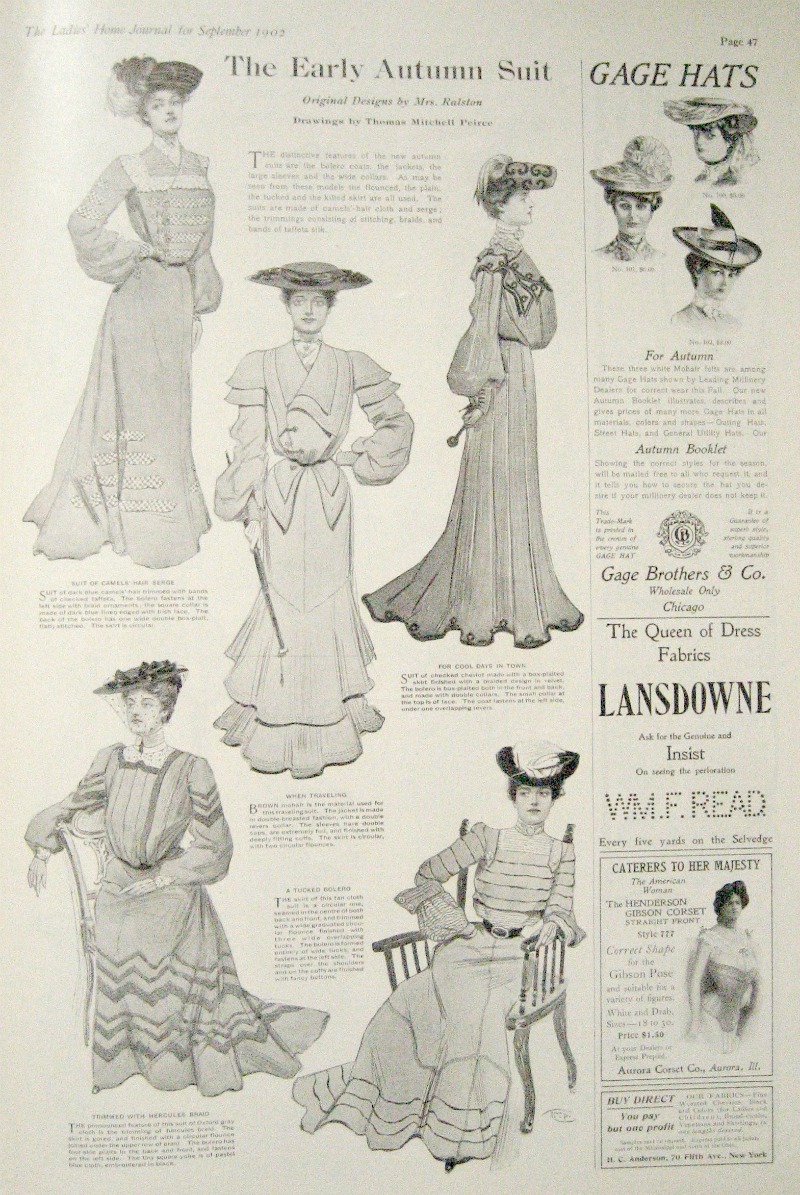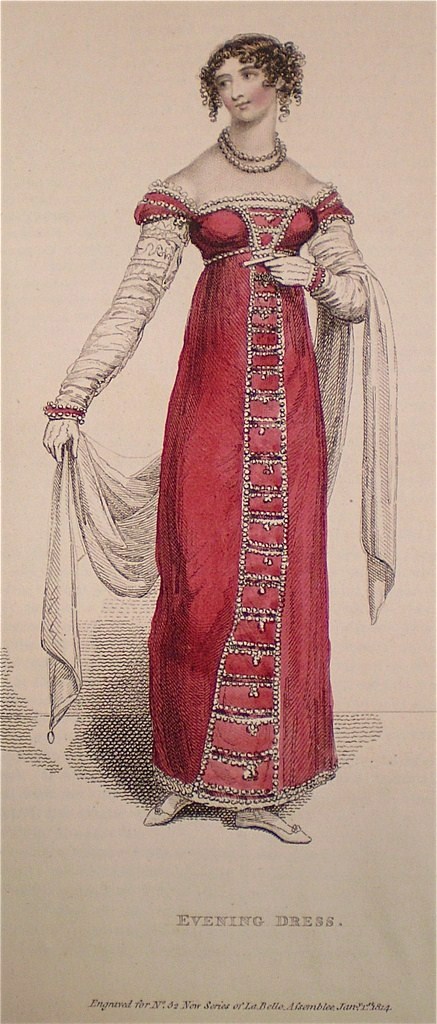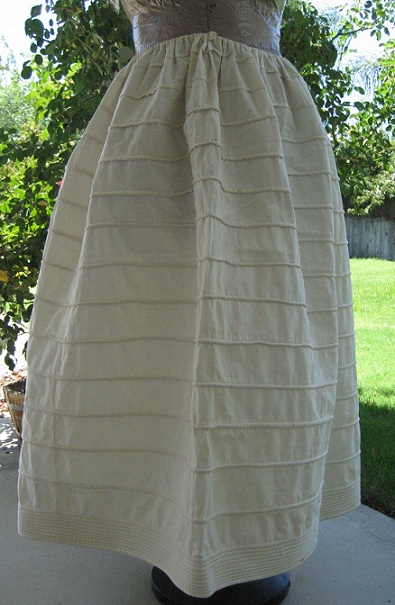Flipping through the stack of (digital) fashion plates, I was enthralled by so many ideas for how to decorate an Early Victorian Bonnet. I was doing trim research last summer to complete my poke bonnet for Costume College and fell in love even more with this lesser-known era. Taken from period publications, early photographs and surviving pieces, here Read More...
Category: Design & Silhouette
1902 Early Autumn Suits
The Early Autumn Suit from September 1902 in The Ladies Home Journal. The distinctive features of the new autumn suits are the bolero coats, the jackets, the large sleeves and the wide collars. As may be seen from these models the flounced, the plain, the tucked and the kilted skirt are all used. The suits are made Read More...
1884 Feb Delineator Jackets
Taken from The Delienator magazine, the bodice/jacket in the top right has 25 buttons and the lower left jacket has 17 plus 12 on the vest. They sure loved their button closures! For a successful reproduction, look for a 3/8″ size. You could also get away with 1/2″ and *maybe* 5/8″. Read More...
Regency Red
I can just see Caroline Bingley in this lovely dress, floating around Netherfield at the ball while gazing down at the country bumpkins invited to the formal affair. Click below to see what Lydia Bennet would like to have. (And can I say that the sleeveless white dress the character wears in the 2006 Pride & Prejudice Read More...
Not Your Grandma’s Nightgown
Don’t think for a minute that Victorian undies are frumpy. I’m talking about late Victorian chemises here. They’re not some long, plain gown with no trim, a conservative cut and b-o-r-i-n-g. I hope your frillies make you feel confident. They should because that’s where your time travel begins – when you first throw that chemise Read More...
5 Questions About Corded Petticoats
From the late 1820s through to the 1860s, there was a structural undergarment that was required in order to get the “proper” bell-shape to your skirt: the Corded Petticoat. It came into fashion right after the Regency era when the waist line was slowly dropping and before the American Civil War when hoop skirts were Read More...
Mid-Victorian Sheer Dresses
In the 1860s women made one-piece dresses in sheer fabrics for warmer weather. In the north, the popular fabric was barège, a thin gauze fabric made from wool or a wool blended with silk or cotton. In the southern climates, sheer solid or printed cottons were fashionable. Read More...





